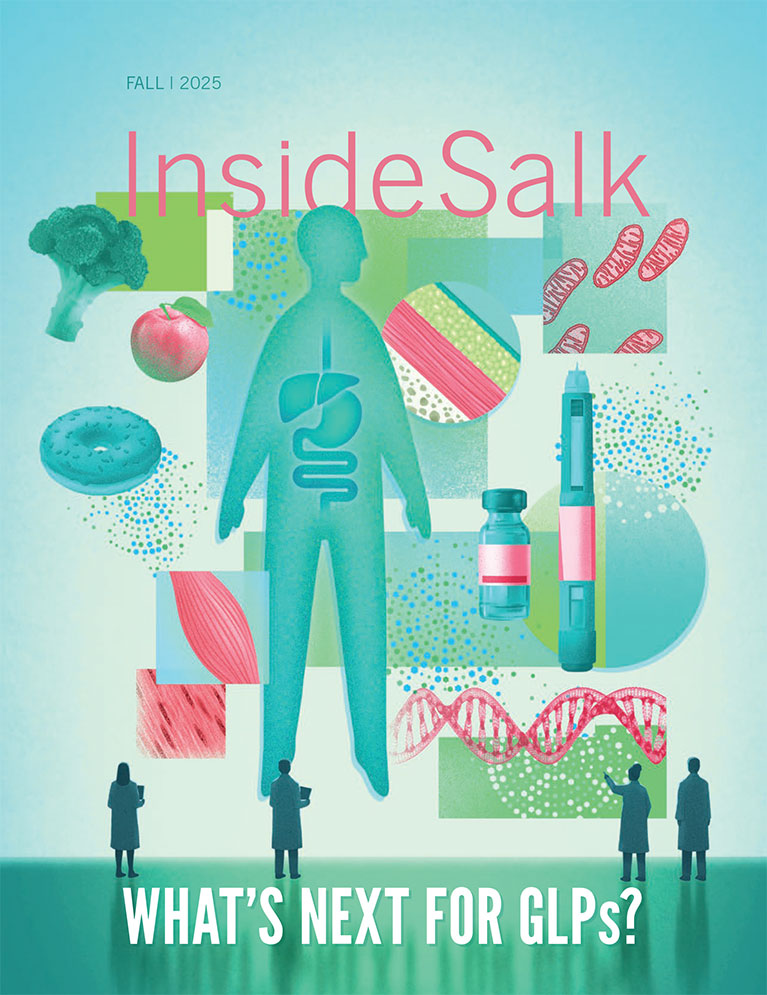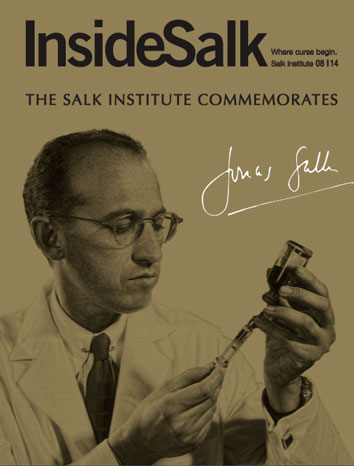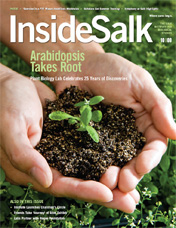Dear Friends,
When I assumed the role of President of Salk, the Board of Trustees agreed that we should identify strategies to address the critical need for additional research space for our faculty and for acquiring new technologies essential to our pursuit of science. Science is changing rapidly, with powerful new technologies, including cloud computing, artificial intelligence and new approaches to conduct multi-omic sequencing and analysis, creating new ways to approach some of biology’s biggest problems.
What followed was a two-year process that involved a reorganization to maximize space and to relocate administrative offices off the main campus. But when it became apparent that those measures would not be sufficient, a building committee of the Board, co-chaired by Chair Dan Lewis and Trustee and Chair Emeritus Irwin Jacobs, worked with staff to explore options for a new building. From this effort, the parcel of land that is currently used as a parking lot on the east side of the campus, adjacent to North Torrey Pines Road, was identified as the best location and two architecture firms, each with important strengths, were asked to work collaboratively on the design.
Across the world the Salk Institute is revered as a historic architectural masterwork designed by Louis Kahn in collaboration with Jonas Salk. It was their collaboration and innovative ideas for creating flexible, collaborative and open space for research and contemplation that informed the current architects. More than a dozen faculty members, executive leadership and staff, as well as members of the Board of Trustees, contributed thoughtful insights and suggestions for the design of the new building. Salk’s 2008 site Masterplan approved by the California Coastal Commission provided the framework, as did Salk’s 2016 Comprehensive Management Plan created in partnership with the Getty Conservation Institute.
With a location identified and a design concept developed, the next challenge before construction could begin was to identify a broad community of support to help fund the building, recruit the next generation of researchers, and deploy technology to drive discovery. To do so, we launched the Campaign for the Future: Building a More Resilient World in August. Our fall 2021 issue of Inside Salk detailed our Campaign priorities.
The first two Salk champions who embraced our fundraising challenge were Irwin and Joan Jacobs. The Jacobs have committed to donating up to $100 million in matching funds to finance construction of the Joan and Irwin Jacobs Science and Technology Center. Their generous gift will help us leverage triple that amount, with $1 matched by the Jacobs Challenge for every $2 leveraged from other donors. With a deadline of June 30, 2022, the Jacobs’ transformative gift will allow construction on the new building to begin in late 2022. Most importantly, their generosity will alleviate our space limitations and advance our scientific activity for decades to come. It is fitting that this issue of Inside Salk profiles Irwin and Joan’s long history of support for Salk, as well as their support of many other important organizations in San Diego and beyond.
Salk researchers in the Crick-Jacobs Center for Theoretical and Computational Biology have been at the forefront of computational theory. This issue of Inside Salk takes a deeper dive into how computational theory is providing new opportunities to address biology’s more challenging problems. Additionally, Trustee Dan Tierney shares his fascination with how machine learning can advance biology. We also share how Staff Scientist Natalie Luhtala loves to paddle surf in between her experiments to better understand pancreatic cancer metastasis, and we detail how Postdoctoral Fellow Laura Newman is examining how mitochondria could be driving the inflammation observed in diseases such as Alzheimer’s, Parkinson’s, diabetes and obesity.
In the days and weeks ahead, I hope you will consider learning more about Salk’s Campaign for the Future (salk.edu/resilient). Our success is made possible with your support and the passionate community of individuals who believe that science has the power to change our world for the better. Or as Jonas Salk would say, “to turn dreams into reality.”
Sincerely,

Fred H. Gage
President, Salk Institute


























































